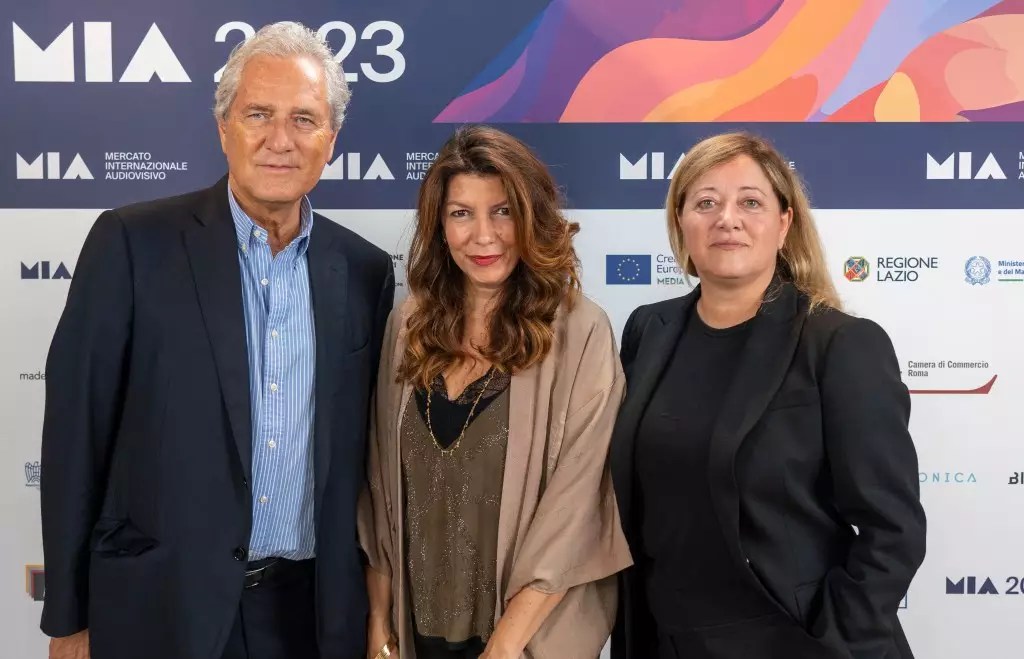As the film and television industry continues to evolve, markets and forums catering to co-productions and pitching opportunities play a pivotal role in shaping global storytelling. One of the notable venues for such collaborations is the MIA Market in Rome, where recent data has revealed a remarkable 20% increase in submissions for its Co-Production Market and Pitching Forum. This article delves into the implications of this growth, analyzes notable submissions, and highlights the contributions from various countries and genres to the vibrant landscape of audiovisual storytelling.
The MIA Market’s surge in submissions reflects a burgeoning interest in co-productions, illustrating the dynamic nature of the international film and television industry. With approximately 600 submissions this year, an impressive 60 projects, amounting to 10% of the total, were selected for presentation. This spike in interest not only underscores the market’s significance but also indicates a broader trend towards collaboration across borders and cultures, further enriching the narrative pool available to audiences worldwide. The 12.5% increase in the diversity of countries represented signifies a growing global reach, reinforcing the idea that storytelling knows no boundaries.
The range of genres represented at MIA Market speaks volumes about the current state of creative expression. This year, the Co-Production Market and Pitching Forum saw submissions across drama, documentaries, films, and animation, pointing to an interdisciplinary approach to storytelling. Notably, the Drama Co-Production Market alone observed a 6% rise in submissions, demonstrating the sector’s ongoing vitality. With 14 series projects from 12 different nations, this forum showcases significant regional narratives and international tales alike—each contributing to a more varied global content slate.
Exciting productions stand out this year, including “A Family Reunion” and “Uglycomics,” both rooted in Italian storytelling yet ripe for international collaboration. Furthermore, international contributions such as “Palmyra,” which probes into the intricate histories tied to ancient artifacts, and “The Aosawa Murders,” with its chilling investigation of historical crimes, showcase the blending of cultures and themes. Such projects not only retain local narratives but also sharpen their appeal to global audiences through collaborative efforts.
A truly commendable aspect of this year’s MIA Market is the strong representation of women in key creative roles. The documentary segment features 14 projects from across 13 countries, with nearly two-thirds spearheaded by female directors or producers. This uplift not only enhances the diversity of perspectives presented but also signals a shift towards greater gender parity within the industry. The animation pitch, experiencing a staggering 50% increase in submissions, continues to enchant audiences, with 15 countries participating in presenting unique animated narratives—a testament to the genre’s universal appeal and potential for innovation.
As the MIA Market embarks on its tenth edition, its status as a leading forum for audiovisual production becomes increasingly evident. Scheduled from October 14-18 at the historic Palazzo Barbernini and Cinema Barberini, the market aims to foster partnerships that transcend geographical limitations. Coordinated by Gaia Tridente, who has been directing the program for the past three years, the MIA Market claims that over 100 audiovisual productions have come to fruition following participation—a statistic that solidifies its role as a catalyst for creativity and collaboration.
Rome’s MIA Market is not just a hub for submissions; it is a signifier of the shifting paradigms in the global entertainment industry. The reported growth in submissions, alongside the increasing representation of different genres and storytellers, is paving the way for a more inclusive and vibrant narrative landscape. As the market continues to thrive, its impact on international storytelling will likely expand, offering new opportunities for creators to engage audiences with diverse and resonant stories.


Leave a Reply